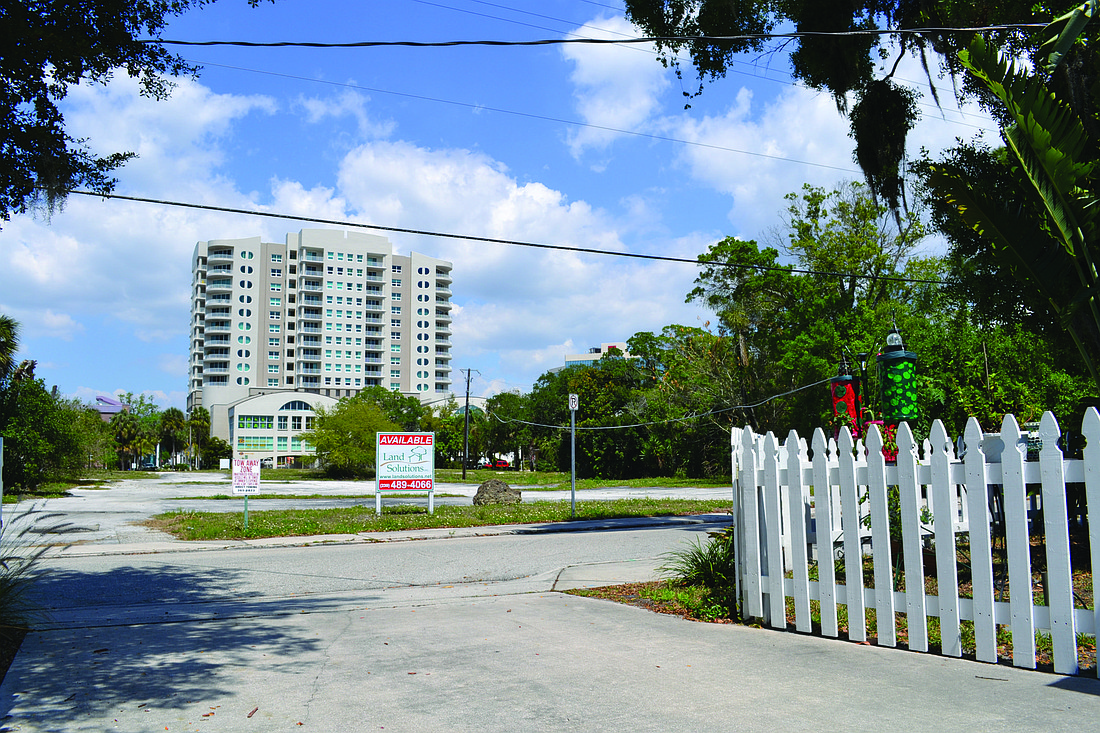- November 25, 2024
-
-
Loading

Loading

Responding to requests from Laurel Park residents to change current zoning procedures, the City Commission approved Monday the creation of an overlay district that will allow greater neighborhood oversight over significant developments in the area.
The Laurel Park Overlay District will require two public workshops when a proposed development in the district exceeds current zoning regulations before a building permit or administrative site plan application may be approved. One meeting must be held before an application is submitted, and the second is held after the application is submitted but before approval may be granted by city staff.
The boundaries of the parcels within the Laurel Park Overlay District are located on Rawls Avenue on the east, Morrill Street on the north, Julia Place and Lafayette Court on the west and Alderman Street and Brother Geenen Way on the south.
Developments in the area immediately surrounding Laurel Park had previously not been subject to public review. City staff will continue to handle the approval of administrative site plans and building permits for nearby downtown developments.
A sizable contingent of Laurel Park residents appeared at Monday night’s commission meeting to back the proposed ordinance. Seven people spoke in favor of the overlay district; more than 10 additional people stood in the audience when Laurel Park Neighborhood Association President Kate Lowman asked for a show of those present to support the measure.
Residents said the established zoning regulations allowed for significant developments to be built across the street from where they live without any neighborhood input.
“What we have been saying is, for large projects, we believe there should be some public input because we are hopeful that will increase the likelihood of a more compatible development,” Lowman said. “This is an important step in the direction of including residents in the improvement process of the building approval process.”
Commissioner Paul Caragiulo was the lone dissenting vote. During the meeting, Caragiulo said he had warmed to the idea of multiple public hearings, but was opposed to a stipulation that would require the City Commission to automatically consider any appeals to permit or site plan decisions that had already been appealed once to the city’s Planning Board.
“I think I would prefer in this situation, if it’s going to be an appeal, that it should go directly to the City Commission, and nobody’s going to be swinging in the breeze,” Caragiulo said. “If it’s certainty that we want, that’s the way to get certainty.”
Caragiulo proposed an amendment that would send all appeals directly to the City Commission, but he failed to receive a second.
The other commissioners called the regulations in the overlay district a satisfying compromise for both sides. Initially, Laurel Park residents asked to eliminate the city’s administrative review process entirely within the boundaries of the district, instead wanting to send proposed developments to the Planning Board for approval.
“If the original plan had been proposed and adopted, there would have been even more public hearings, more opportunities for people to come before the planning board and the commission and more people speaking,” Commissioner Susan Chapman said. “So I think this is a good compromise.”
Lowman said she would have preferred the Planning Board process because it was a more tested system; before a downtown rezoning, developments in the overlay district went before the Planning Board. While there’s no guarantee that the new regulations will produce the results some residents are seeking, she’s optimistic about the change.
“I think it’s an important step forward, and I’m hopeful it will make a difference,” she said. “We’ll find out — it is a new system, so no one knows exactly how well it will work.”
Contact David Conway at [email protected].
Also during Monday’s City Commission meeting:
• The commission approved the expansion of the Main Street Improvement Project to include the instillation of brick pavers to four crosswalks at Main Street and Palm Avenue. In response to opposition from the owners of the Artisan Cheese Company, the project was moved from July to September, due to the latter month being historically slower for business. Construction will require the intersection to close for 16 working days, and the project will cost $57,155.
• Norman Gollub, downtown economic development coordinator, presented an update on economic development efforts. Gollub outlined six potential goals for the city going forward:
— Creating jobs for local college graduates
— Implementing a downtown branding and marketing campaign to compete with Bradenton and Lakewood Ranch
— Developing affordable downtown housing opportunities for younger and older people alike
— Including the revitalization of the North Trail in downtown initiatives
— Revisiting bayfront connectivity and the Cultural District plan.